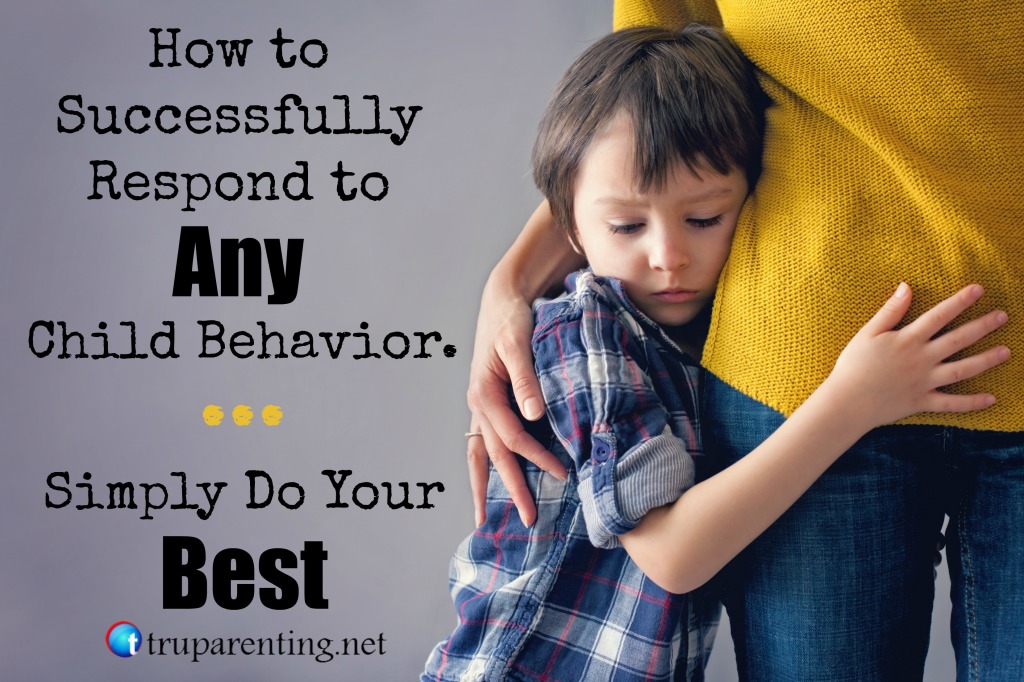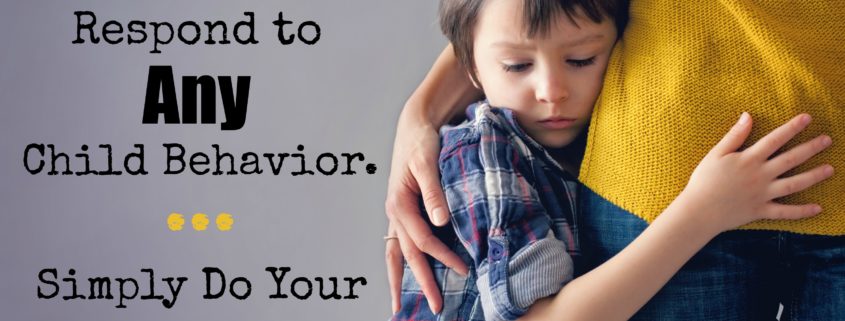How to Successfully Respond to ANY Child Behavior. Simply Do Your BEST.
 What if there was one simple pattern of actions that would help us to positively impact almost any behavioral conflict that arises in our parenting? Would you be interested?
What if there was one simple pattern of actions that would help us to positively impact almost any behavioral conflict that arises in our parenting? Would you be interested?
There are a million articles out there discussing the same common parenting and behavioral struggles. We talk about tantrums. We talk about bedtime struggles. We talk about mealtime and homework battles. Too often we end up complicating parenting by inventing a different technique, tactic or method for each and every situation. It doesn’t have to be so complicated. Although the exact words and actions may very slightly, there is a simple, 4 step pattern to ensure ultimately that our actions will be positive, helpful and will point our child and our relationship with our child in the right direction.
Parents from all over the world and from different walks of life, who take my coaching course, are constantly expressing that the primary cause of their frustration and yelling often starts with simply not knowing what to do next. They want to learn how to decrease their frustration and overwhelm and feel more calm in their daily responses with their child(ren). For this reason I teach that it’s helpful to think ahead and have a plan in place of what you will do, both internally and externally, when you are triggered by your child’s behavior or other factors around you. Some situations require different words or actions because children are unique in how they best respond and learn. However, that doesn’t mean that we can’t have a specific plan that will help to drive each action we take when problems arise. When we have a sequential pattern or plan of principles to guide our responses to conflicts we are much more likely to choose words and actions that will lead to success and happiness.
The following 4 sequential principles from the acronym “BEST” help us do our very best during each interaction with our kids. These principles can also apply to how we interact during conflicts in other relationships of our lives as well.
Do Your “BEST” 1. Behave and Manage your self first (emotions and actions): Just having this pattern or plan in place helps to calm our reactivity and gives us a reference for managing our own behavior. This is the first task of any conflict, to be aware of and manage my our thoughts, emotions and behavior. When your child talks back to your requests, seems to ignore your inquiry or when you walk in on your child destroying your Ipad, no matter the situation or lesson to be learned, your first job is to consciously acknowledge your automatic reactions, and then model that you can feel reactive inside without freaking out. This is not always a simple undertaking, but pays significant dividends in all areas of our life and parenting. It is worth taking the time to practice various methods that help you increase awareness and improve your ability to calmly respond. You can find resources for learning greater awareness and calm through the following links…
2. Empathetically help your child manage their emotions and actions: At it’s core, empathy is about understanding. This second step is almost impossible to do if you have not mastered the first step and it is impossible to fake. You may be able to rattle off some trite phrase without truly feeling empathy but our children’s amazing brains have a way of detecting false empathy and calling out our bull. Honestly feeling empathy for our kids takes challenging some of our “grown-up” perceptions and remembering what it was really like to be their age and in their situation. It takes giving a little extra thought to your child’s triggers, reactions and behaviors and connecting from where they are. When we truthfully understand their point of view we work differently from an “us vs. the problem” perspective rather than a “you vs. me” position. This makes the next step of setting clear boundaries limits and consequences much easier and more effective.
3. Set and follow through with clear boundaries, limits and consequences: Each of the steps of doing your “BEST” require some thought and planning ahead of time. Each of these steps live within a recurring cycle that happens over and over from day to day and builds upon the last cycle. Setting boundaries, limits and consequences in positive, firm and kind ways is no exception to this. Boundaries, limits and consequences are similar but are not the exact same thing. Understanding their differences can be helpful in making sure they are both firm and kind. (Check out my article about these related principles HERE.) Boundaries are statements about what you will or will not do, while limits are statements of what you will or will not allow your child to do and consequences can be natural or imposed results of an action that impacst the child. With each of these important concepts in mind, please realize that each of these principles are essential to healthy relationships but that the objective is to protect both you and your child, to learn and to assert positive influence rather than force and control.
4. Teach during the good times: Kids learn best when they are feeling good. Traditionally, discipline is usually done when kids are in their worst frame of mind for learning. When we use punishment or immediate negative imposed consequences as our primary disciplinary tool it often falls on deaf ears. This isn’t because your kids are more defiant or resistant than any other kids. It’s simply a reaction of their brain or mental state. The solution for this is to do your cooperative teaching and problem solving when things are positive and happy. Use methods and means to teach and work together that put you and the child on the same side and encourage connection and solutions rather than further problems. (I’ve written various articles on using play as a disciplinary tool as well as having a weekly family night to solve problems together in a fun way. You can also find other effective ways to teach during the good times HERE.) The objective is to help your child learn and for you to learn and grow along with them.
None of us are perfect parents. I’ve found that most parents are usually doing the best they can with what they have. You love your child. You want the best for your child. You want to be happy and you want them to be happy. You want your kids to learn the skills and things they need to know to be constructive, healthy individuals and to have happy relationships. Each new skill you acquire as a parent help you to do a little better. When you come across a new problem or frustrating situation you may ask yourselves, “What do I do now?” You can review these simple 4 steps of this pattern and you can do your very “BEST.”

